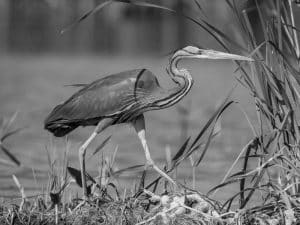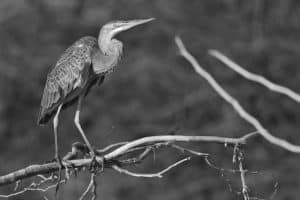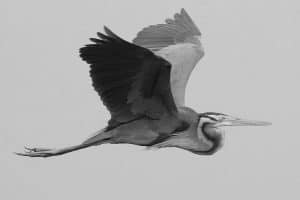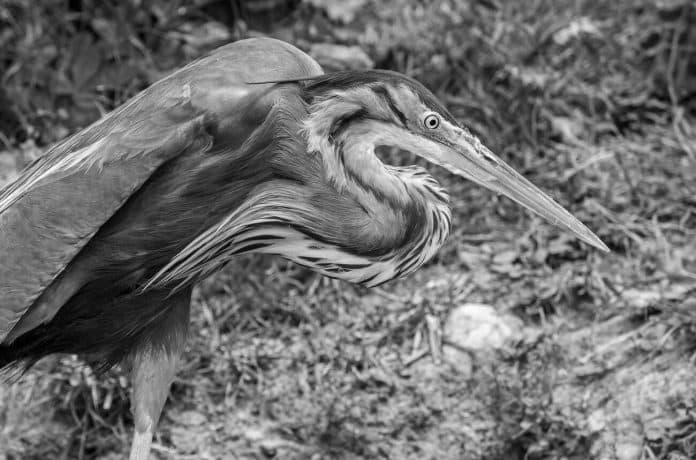Introduction to the Purple Heron
Welcome to the captivating world of the purple heron, an elegant and majestic bird that graces the wetlands of Tanzania with its presence. The purple heron in Tanzania, scientifically known as Ardea purpurea, is a stunning wading bird that belongs to the heron family, Ardeidae. With its striking plumage and graceful movements, the purple heron is a sight to behold in the lush wetlands of Tanzania. This article will take you on a visual journey through the habitat, behaviors, conservation status, and the significance of the purple heron in Tanzanian wetlands, providing insights and tips for observing and photographing these magnificent birds.
Habitat and Distribution of the Purple Heron in Tanzania

The purple heron is widely distributed across the wetlands and marshy areas of Tanzania, where it finds an ideal habitat for foraging and nesting. These wetlands include the famous Serengeti National Park, Ngorongoro Conservation Area, and Manyara Lake, among others. The purple heron is particularly attracted to areas with shallow water, dense vegetation, and abundant fish, which form the basis of its diet. The diverse wetland ecosystems of Tanzania provide the purple heron with ample opportunities to thrive and fulfill its ecological role as a top predator in the food chain.
The distribution of the purple heron in Tanzania is influenced by seasonal changes, as these birds are known to migrate to and from the region in response to fluctuations in water levels and the availability of food. During the breeding season, the purple heron can be found in colonies nesting in the reed beds and trees surrounding the wetlands, creating a mesmerizing spectacle for bird enthusiasts and researchers alike. Understanding the habitat and distribution of the purple heron is essential for appreciating its significance within the Tanzanian ecosystem and for efforts aimed at its conservation.
Behaviors and Characteristics of the Purple Heron
The purple heron is characterized by its distinct appearance and fascinating behaviors, making it a subject of intrigue for wildlife enthusiasts and photographers. With its long neck, slate-grey plumage, and striking purple and chestnut hues during the breeding season, the purple heron is a visual marvel in the wetlands of Tanzania. These birds are known for their stealthy hunting techniques, as they patiently stalk their prey in the shallow waters, using their sharp beaks to capture fish, amphibians, and insects with remarkable precision.
During the breeding season, the purple heron displays captivating courtship rituals, with elaborate displays of plumage and graceful movements to attract potential mates. Their vocalizations, consisting of deep croaks and squawks, add to the enchanting ambiance of the wetlands, as they communicate with each other and assert their territories. Understanding the behaviors and characteristics of the purple heron enhances the appreciation of their role in the ecosystem and provides valuable insights for observing and photographing these magnificent birds in their natural habitat.
Conservation Status of the Purple Heron in Tanzanian Wetlands

The conservation status of the purple heron in Tanzanian wetlands is of paramount importance, given the threats and challenges facing these iconic birds. The wetlands of Tanzania, including the renowned Lake Victoria and Rufiji River Basin, are vital habitats for the purple heron, providing crucial breeding and foraging grounds for their survival. However, these wetlands are increasingly vulnerable to human activities, such as habitat destruction, pollution, and overfishing, which directly impact the delicate balance of the ecosystem and the well-being of the purple heron population.
The International Union for Conservation of Nature (IUCN) has classified the purple heron as a species of “Least Concern,” indicating that the global population is relatively stable. However, localized threats and habitat loss in Tanzania warrant focused attention and conservation efforts to ensure the long-term sustainability of the purple heron population in the region. Collaborative initiatives involving government agencies, conservation organizations, and local communities are essential for addressing the conservation status of the purple heron and safeguarding their habitats in Tanzanian wetlands.
Capturing the Majesty: Photography Tips for Photographing Purple Herons
Photographing the purple heron in the enchanting wetlands of Tanzania offers a unique opportunity to capture the beauty and grace of these magnificent birds in their natural habitat. Whether you are an amateur photographer or a seasoned professional, the following tips will enhance your photography experience and help you create stunning images of the purple heron.
- Study the Behavior: Observing the behaviors and movements of the purple heron will enable you to anticipate their actions and capture compelling shots. Pay attention to their hunting techniques, flight patterns, and interactions with other birds, as these moments can provide captivating photographic opportunities.
- Use Natural Light: The soft, golden light of sunrise and sunset accentuates the colors and textures of the purple heron’s plumage, creating a warm and ethereal ambiance in your photographs. Position yourself to take advantage of the natural light and experiment with different angles to achieve striking compositions.
- Focus on Detail: The intricate patterns and textures of the purple heron’s feathers and the intensity of their gaze convey a sense of intimacy and depth in your photographs. Capture close-up shots that highlight these details, allowing viewers to appreciate the subtle intricacies of the bird’s features.
- Be Patient and Respectful: Patience is key when photographing wildlife, including the purple heron. Approach the birds with caution and maintain a respectful distance to avoid causing disturbance. By observing and respecting their natural behaviors, you can capture authentic and unobtrusive images that celebrate the essence of the purple heron in its habitat.
By applying these photography tips and immersing yourself in the captivating world of the purple heron, you can create compelling and evocative images that celebrate the majesty of these birds and contribute to raising awareness about their conservation.
Observing the Purple Heron in its Natural Habitat

Immersing yourself in the natural habitat of the purple heron in Tanzanian wetlands offers a profound and enriching experience, allowing you to witness their behaviors, interactions, and ecological significance firsthand. Whether you are exploring the vast expanse of the Serengeti National Park or navigating the tranquil waters of Lake Manyara, observing the purple heron in its natural environment provides a deeper understanding of its role within the intricate web of life in the wetlands.
As you venture into the wetlands, take time to appreciate the diversity of wildlife and ecosystems that coexist alongside the purple heron, from colorful waterfowl and crocodiles to lush vegetation and serene waterways. By observing the purple heron in its natural habitat, you gain a profound appreciation for the interconnectedness of species and the delicate balance that sustains the wetlands of Tanzania. This firsthand experience fosters a sense of stewardship and respect for the natural world, inspiring a commitment to conservation and the preservation of these vital habitats for future generations.
The Role of Purple Herons in the Ecosystem
The purple heron plays a pivotal role in the ecosystem of Tanzanian wetlands, contributing to the balance and functioning of these diverse habitats. As top predators in the wetland food chain, purple herons regulate the populations of fish, amphibians, and invertebrates, exerting a cascading influence on the ecological dynamics of their environment. By controlling the abundance of prey species, purple herons help maintain the health and diversity of wetland ecosystems, supporting the resilience of other species and the overall ecological stability.
Furthermore, the activities of purple herons, such as foraging and nesting, contribute to the nutrient cycling and energy flow within wetland ecosystems, enriching the soil and water with organic matter and sustaining the productivity of these vital habitats. Their presence also serves as an indicator of wetland health, reflecting the quality of water, food resources, and nesting sites available to a wide range of wildlife species. Recognizing the role of purple herons in the ecosystem underscores the interconnected relationships that define the intricate web of life in Tanzanian wetlands and highlights the importance of their conservation.
Challenges and Threats Facing Purple Herons in Tanzanian Wetlands
Despite their resilience and adaptability, purple herons in Tanzanian wetlands face a myriad of challenges and threats that jeopardize their well-being and survival. Habitat loss and degradation due to human activities, such as agriculture, urban development, and infrastructure projects, encroach upon the wetlands, diminishing the availability of suitable nesting sites and foraging grounds for the purple heron. Additionally, pollution from agricultural runoff, industrial activities, and waste disposal introduces contaminants into the water and soil, posing health risks to the purple heron and other wildlife.
Furthermore, the unsustainable exploitation of natural resources, including overfishing and wetland drainage, disrupts the delicate balance of the ecosystem and diminishes the food supply for the purple heron. These anthropogenic pressures, compounded by climate change and natural disasters, amplify the vulnerability of purple herons in Tanzanian wetlands, necessitating proactive measures to address the root causes of these threats and safeguard the habitats upon which these birds depend.
Conservation Efforts and Organizations Supporting the Protection of Purple Herons
In response to the challenges facing purple herons in Tanzanian wetlands, a concerted effort is underway to implement conservation initiatives and support organizations dedicated to the protection of these iconic birds and their habitats. Local and international conservation organizations, such as the Tanzanian Wildlife Research Institute (TAWIRI), BirdLife International, and Wetlands International, are actively involved in conducting research, advocacy, and community-based conservation programs aimed at mitigating the threats to purple herons and promoting the sustainable management of wetland ecosystems.
These organizations collaborate with government agencies, local communities, and stakeholders to develop and implement conservation strategies that encompass habitat restoration, environmental education, and policy advocacy to address the pressing issues affecting purple herons and their habitats. By engaging in partnerships and fostering public awareness, these conservation efforts strive to foster a harmonious coexistence between human activities and the protection of purple herons in Tanzanian wetlands, ensuring the perpetuation of these vital ecosystems for future generations to cherish and benefit from.
Conclusion: Celebrating the Beauty and Importance of the Purple Heron in Tanzanian Wetlands
As we conclude our visual journey through the realm of the purple heron in Tanzanian wetlands, we are reminded of the profound beauty and significance of these remarkable birds within the intricate tapestry of nature. From their graceful movements and vibrant plumage to their vital role in maintaining the ecological balance of wetland ecosystems, purple herons embody the resilience and splendor of wildlife in Tanzania. By embracing the majesty of the purple heron and recognizing the challenges they face, we can foster a collective commitment to their conservation and the preservation of the wetlands they call home.
As stewards of the natural world, we have the privilege and responsibility to safeguard the habitats and species that enrich our lives and sustain the planet. Through advocacy, education, and sustainable practices, we can contribute to the protection of purple herons and the integrity of Tanzanian wetlands, ensuring that future generations can continue to marvel at the beauty and importance of these iconic birds. Let us celebrate the majesty of the purple heron and work together to secure a harmonious future for wildlife and humanity in the breathtaking wetlands of Tanzania.
This is a powerful and insightful visual journey into the world of the purple heron in Tanzania’s wetlands. If you are inspired by the beauty and importance of these majestic birds, consider supporting conservation organizations and participating in ecotourism initiatives that promote the sustainable enjoyment and protection of Tanzanian wetlands. Together, we can make a meaningful difference in preserving the splendor of the purple heron and the rich biodiversity of our natural world.


































